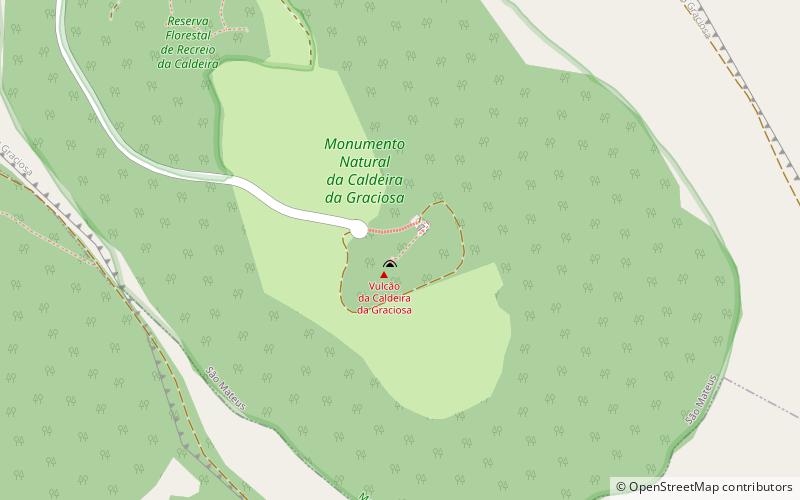Caldeira da Graciosa, Graciosa


Facts and practical information
Caldeira da Graciosa which is constituted in the Natural Monument of Caldeira da Graciosa is a geological formation of volcanic origin located in the municipality of Santa Cruz da Graciosa, Graciosa Island, Azores.
This volcanic caldera called Caldeira da Graciosa is characterized, from the point of view of volcanic morphology by having two main regions: It is a polygenetic volcano with about 2 square kilometers, and occupies the entire southeast part of the island of Graciosa along with a platform oriented in the NW direction, which forms a region of basaltic nature with about 40 square kilometers and consists of about 55 monogenetic cones or slag cones with associated lava flows.
The Caldeira da Graciosa Volcano has a basal diameter of about 4.4 kilometers and a maximum altitude of 405 meters, thus being a relatively low volcano but quite spread out. This volcano has an elliptical depression on its summit, with a diameter of 1.6 x 0.8 kilometers. This caldera originated by subsidence, and settlement of materials and is associated with explosive siliceous eruptions of the plinian type, which will have occurred about 12 200 years ago.
In the interior of this caldera there is a volcanic cave of appreciable dimensions formed mainly by the retreat of the melting materials, formed by the current lava of low viscosity and which originated the so called Furna do Enxofre that in practice is a volcanic vent through which there is the exit of sulfurous gases, having at the bottom a cold water lagoon.
This important degassing field is formed by a continuous fumaroles that oscillates with the environmental conditions at great depth. It also presents sludge and diffuse gaseous emanations of carbon dioxide, which are released imperceptibly in several areas of the cave floor.
Graciosa
Caldeira da Graciosa – popular in the area (distance from the attraction)
Nearby attractions include: Termas, Lighthouse of Carapacho, Furna da Maria Encantada, Furna do Enxofre.




